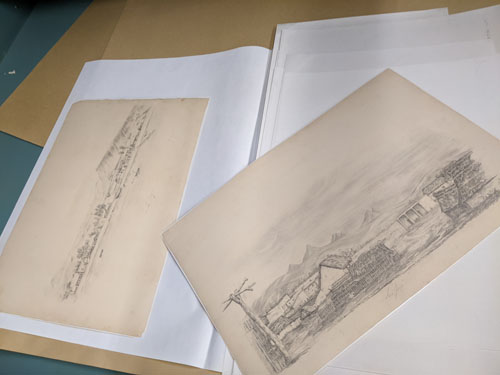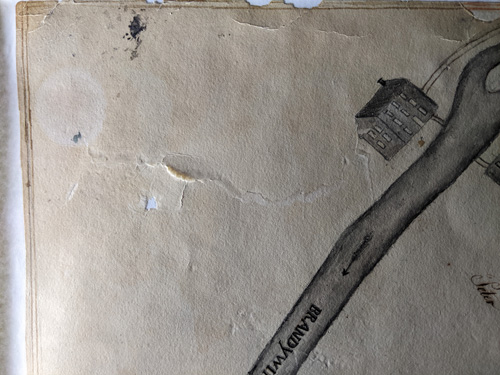When event venues and restaurants invited guests back following COVID lockdowns, some places requested proof of COVID vaccination status. You might have heard the advice to laminate your COVID vaccination card if you kept it in a wallet. This is fine for materials that need to be durable for short-term use but not for historic document preservation.
During conservation surveys at Hagley, we are identifying historical papers with lamination. Items like letters, maps, illustrations, and plans have been sandwiched between clear plastic film. As they are discovered, Hagley conservators are noticing that it appears that the practice of lamination was reserved for special materials, and not only those that were weak or brittle.

This type of lamination was once thought to be a legitimate preservation practice. Adding strengthening layers of cellulose acetate film could enable the handling of weak and worn papers. During the 1930s, when the lamination process was first developed, the focus was on acidic paper that would inevitably become brittle. While it may have been initially a helpful idea, the plastics used were unstable, turning acidic.
Assessment of some of the laminated documents at Hagley shows that they have suffered additional damage, including multiple crescent-shaped creases with cracks in the paper. The treatment may have given a false sense of durability and encouraged less careful handling. The laminated layers are also causing stress to the paper support of the original artifacts because it is stiff and flexes differently. As cellulose acetate plastic ages, it shrinks, causing physical stresses to the paper.
Many of the laminated items at Hagley were treated uniquely, with a layer of heavier archival paper underneath the object. The edges of the backing are curling, likely due to the shrinkage of the film. Some materials have a detectable vinegar smell (acetic acid) emanating as the plastic deteriorates.

With thorough examination and testing of the laminated documents and illustrated works, Hagley will develop a plan for preserving them and preventing additional damage. This plan may vary from one item to the next since each may consist of different media with unique properties. A delamination process typically requires solvent, which may not be safe for some materials.
Laura Wahl is the Library Conservator at Hagley Museum and Library.
